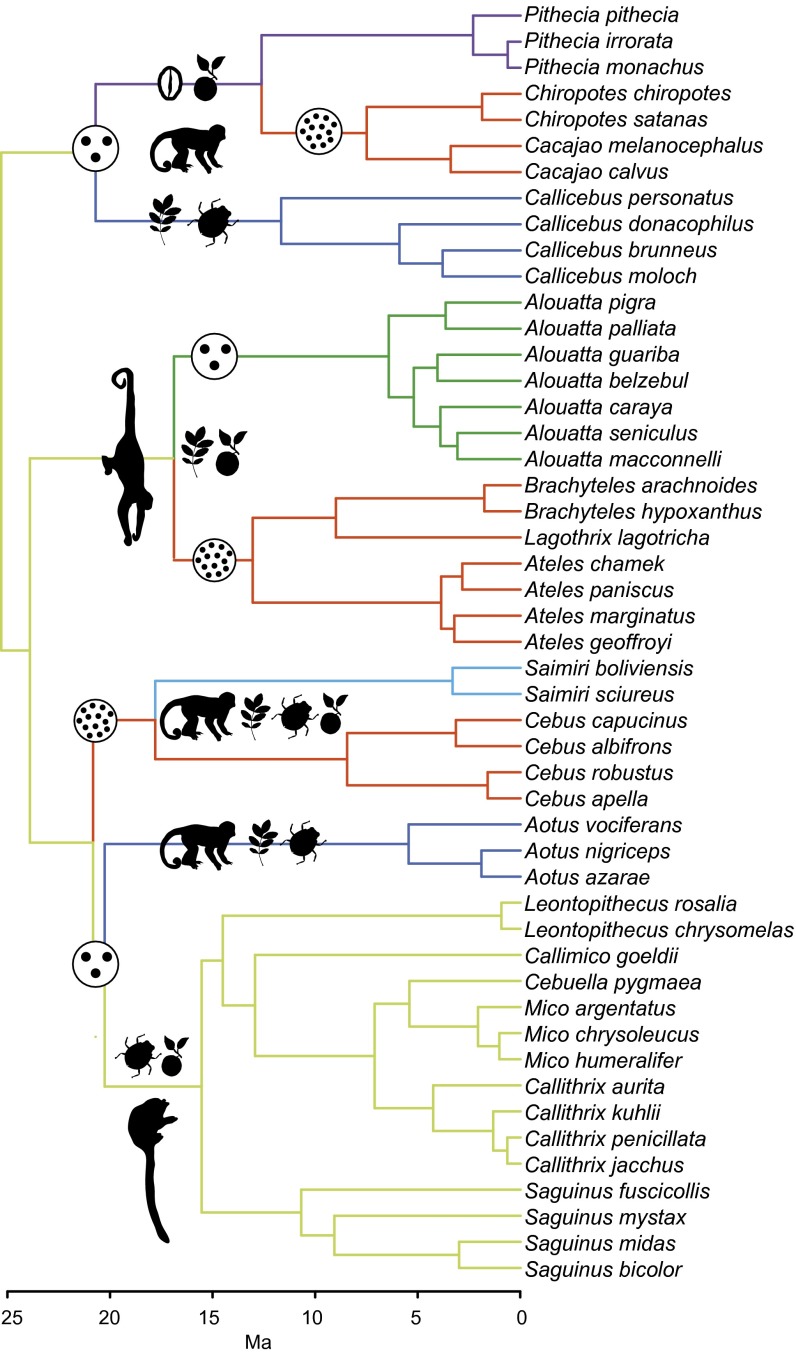Fig. 3.
Time-calibrated phylogenetic tree for the studied New World monkey species showing adaptive regimes for the best-fitting model of brain shape evolution. Regimes were assigned based on diet composition, locomotion strategy, and group size with exception of Saimiri, which was assigned based on the SURFACE results (Supporting Information). Drawings broadly depict the ecological categories that define these regimes and are not intended to represent ancestral states. Diets are represented by niche-defining food items (17). Locomotion is represented by typical behaviors. Group size (small and large) is represented by encircled dots. Convergent regimes are defined by having large group size. Aotus and Callicebus are considered by some workers to be sister clades.

